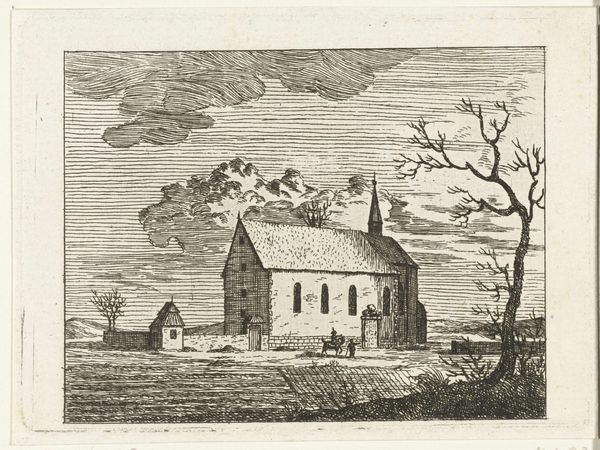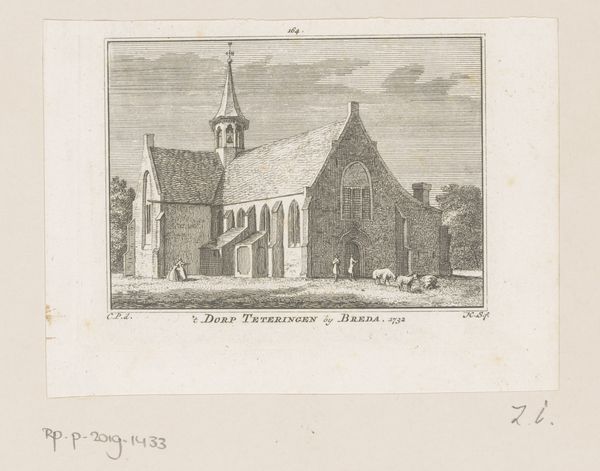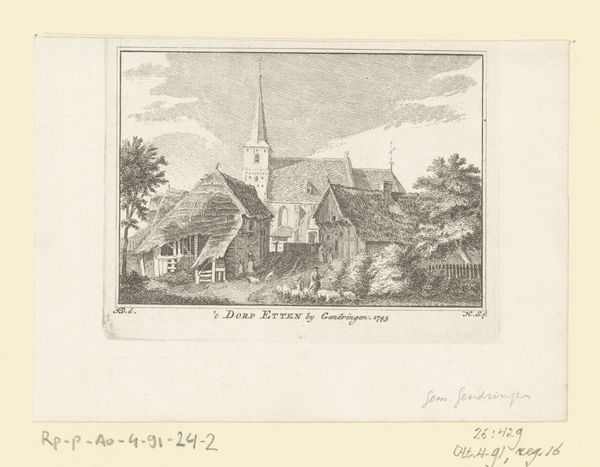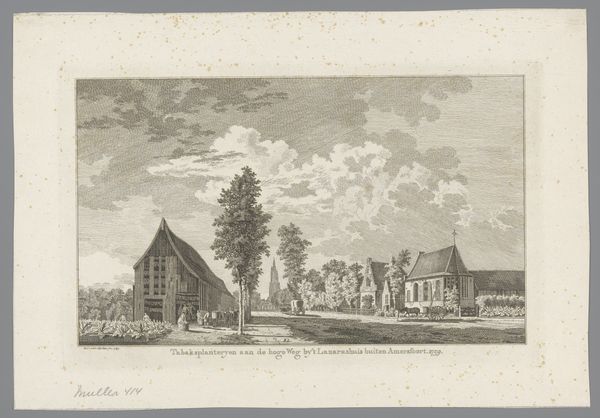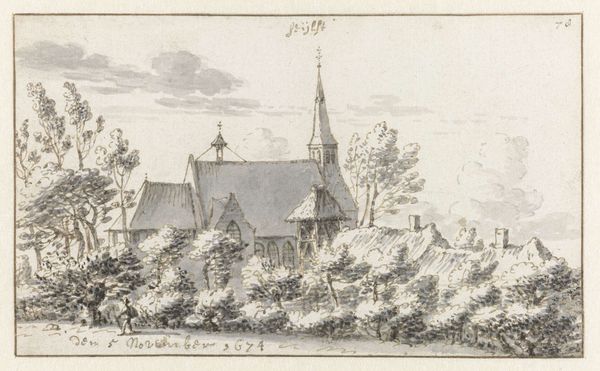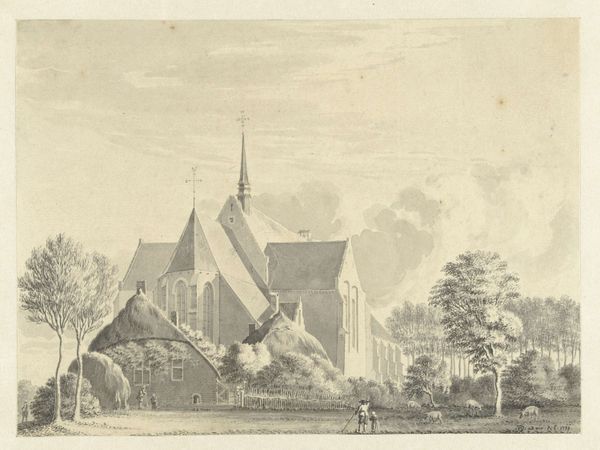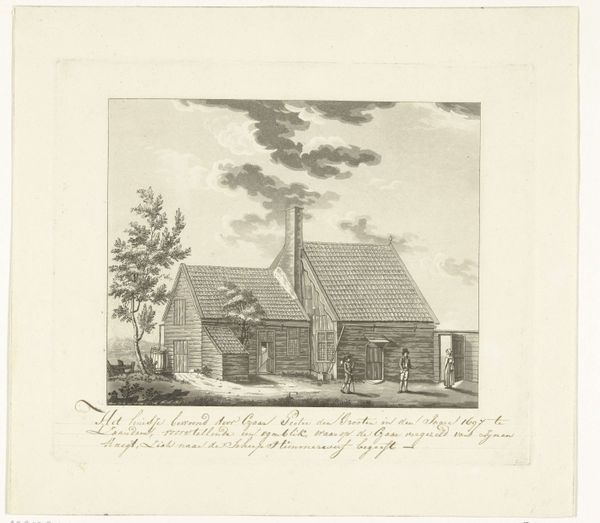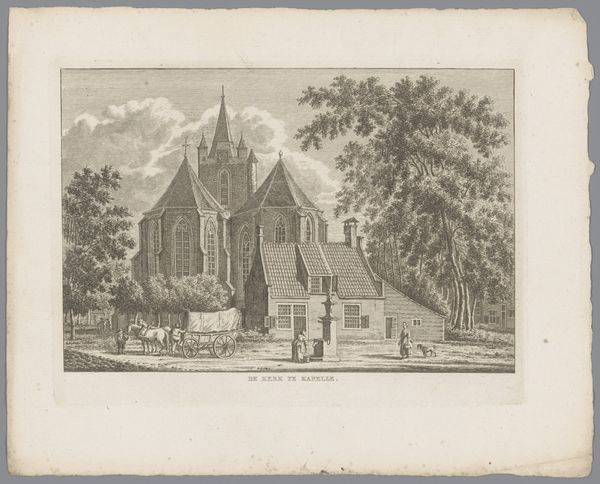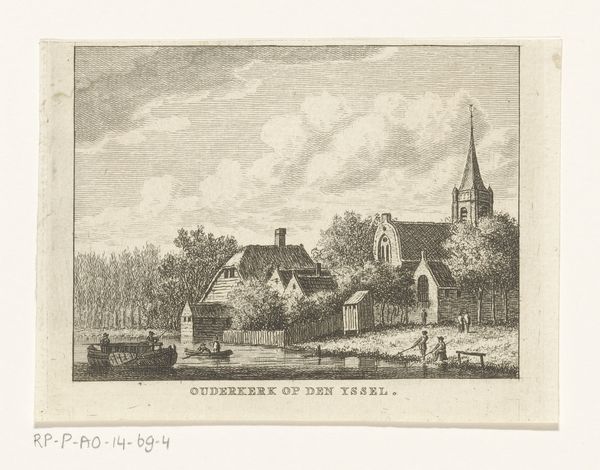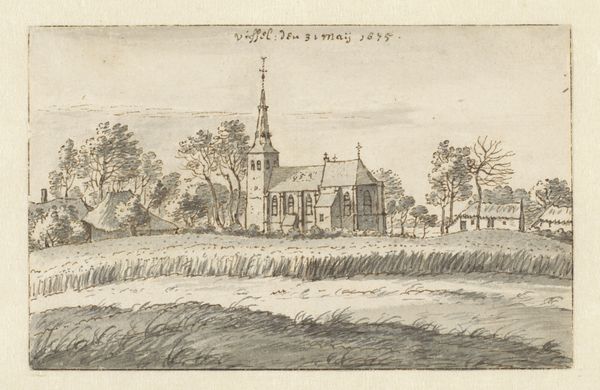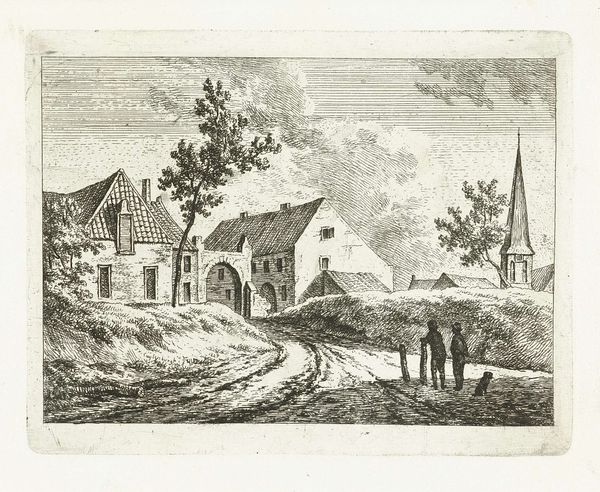
Dimensions: height 84 mm, width 106 mm
Copyright: Rijks Museum: Open Domain
Curator: This is a print by Abraham Rademaker entitled "Gezicht op de kerk te Arkel, 1631." Though the date in the title suggests otherwise, the piece actually originates from sometime between 1725 and 1803. Editor: It has a quiet, almost melancholy feel to it, doesn't it? All those delicate lines creating this incredibly still image of a small, rather isolated church. Curator: The isolation is key. Rademaker made many such topographical prints. These weren't just pretty pictures; they documented specific places in the Netherlands, feeding a growing sense of national identity. Note how the church is framed: almost centered but still embedded in the landscape. It reflects the baroque style, still hinting at Dutch Golden Age elements of landscape paintings with cityscapes that held symbolic value. Editor: Right, like the church represents a stable, rooted presence in a changing world? I keep coming back to the dogs in the foreground, scratching or lying around. They're wonderfully observed, just little spots of ordinary life contrasting with this, the slightly looming religious structure. Curator: They serve a documentary purpose, showing life in a small town or landscape of that time, for people interested in their region, province, and towns. And, these prints would have been relatively affordable, circulating widely. It offered a kind of accessible patriotism, grounded in the everyday. Editor: That's interesting. It almost makes the divine feel… domestic. As if God also resides with the everyday. I'm now thinking the church is less about a feeling of melancholy and more a kind of stoic acceptance and peaceful harmony. A calm place. Ironic since they often inspired quite the opposite back then. Curator: I agree, there’s a sense of everyday faith being documented. And in our more secular age perhaps that ordinary connection feels appealing, that reminder of quiet strength. Editor: It’s strange how looking closely at something historical, through the artist's gaze, we suddenly feel like we're looking at ourselves and our time, too. What Rademaker sought to document, we find speaks still in hushed tones to those willing to observe.
Comments
No comments
Be the first to comment and join the conversation on the ultimate creative platform.

